You've seen the Hell is Real sign. Meet Jimmy Harston, the man behind it
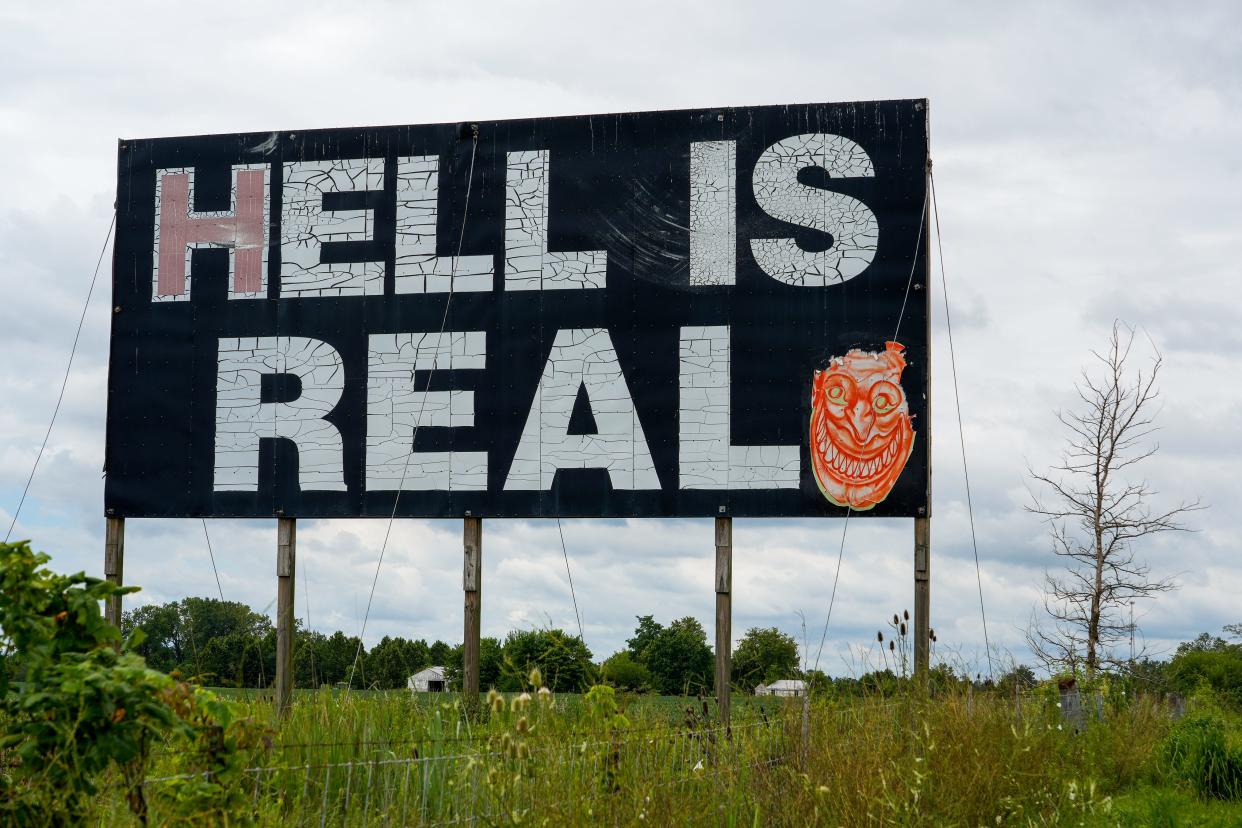
Forty years ago Kentucky developer Jimmy Harston said he heard the Lord calling.
If you've driven on I-71 between Columbus and Cincinnati you've seen what Harston said he heard: Share the message of Christianity. And thus was born signs touting the Ten Commandments and, more famously, "Hell is Real."
In fact, Harston has put up roughly three dozen billboards − in Ohio and in six other states − to answer that call, he said.
The Ohio Hell is Real billboard, put up in 2004, has become such a landmark it has its own GPS coordinates. (For those looking: 39.7375N, 83.347778W.) It birthed the name of the soccer rivalry between FC Cincinnati and Columbus Crew. EBay has listings for T-shirts, stickers and patches bearing the sign's likeness.
Comedians joke about it. There are Reddit threads discussing the billboard's meaning. TikTok creators muse about it.
And earlier this year when the Ohio Tourism Board was in the midst of rebranding the state's tourism slogan, one online commenter suggested, "Hell is Real." Let's just say nobody took that idea seriously.
Sarah Wickham, a spokeswoman for the Ohio Development Department, which oversees the state's tourism efforts, knew right away what sign The Enquirer was talking about. She said her office has never done anything related to the sign.
But Wickham did acknowledge, "It’s one of many unique things in Ohio. If that’s the kind of thing you enjoy, you might like to learn about some other unique finds in Ohio."
And then she ticked off things like the Longaberger basket building in Newark, the Troll Hole Museum in Alliance, the shortest street in America in Bellefontaine and Grandpa's Cheese Barn in Ashland.
But back to the billboard.
For those who have driven by it, it's so memorable no description is needed. For those who haven't, it's written in white block letters, the "H" in hell painted red, all on stark black background.
"The Lord put it on my heart," said Harston, 72. As far as a rivalry soccer match between Cincinnati and Columbus, "it doesn’t damage what I have done. I am sure the Lord is using it for what it was meant to be."
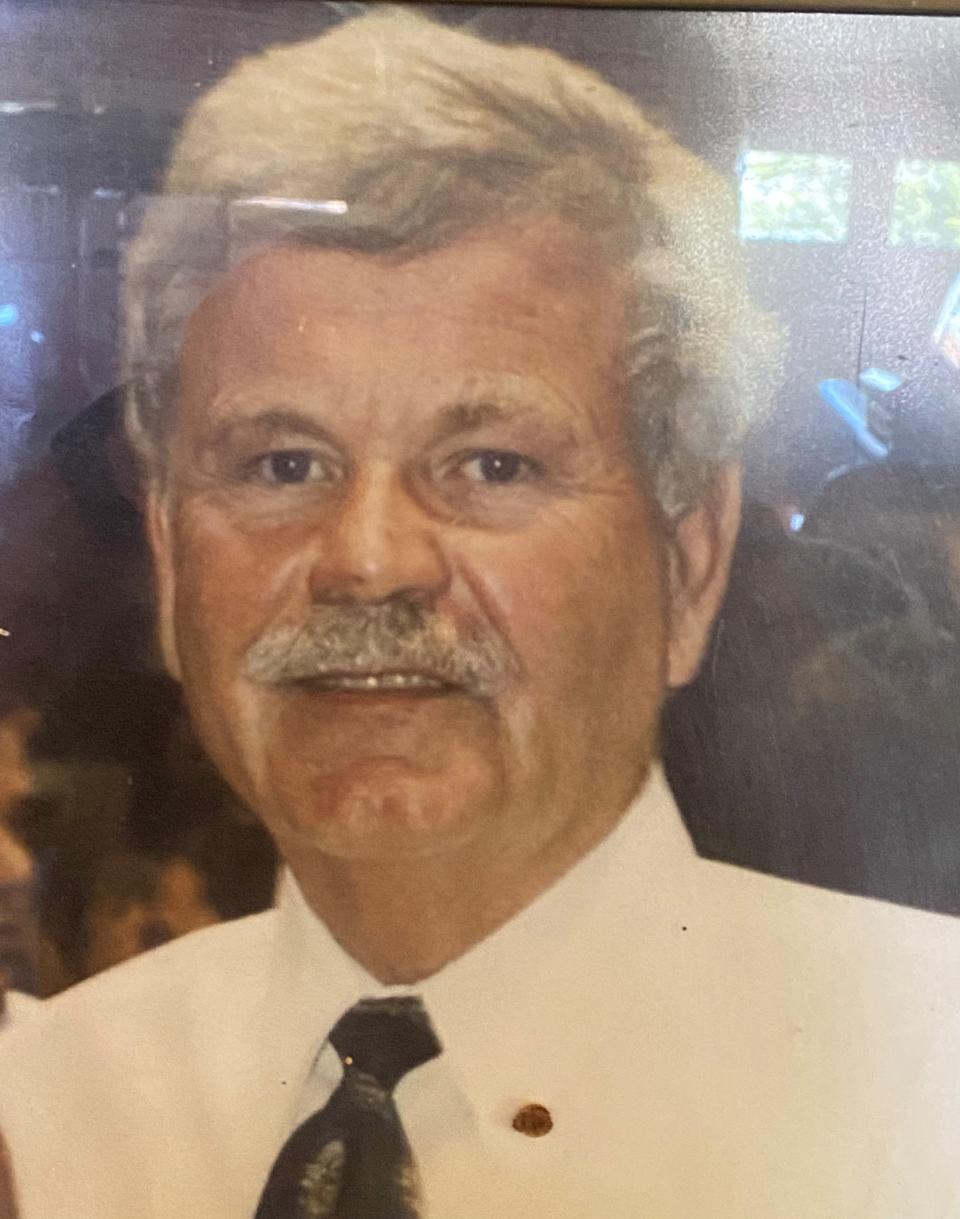
Harston put up his first sign roughly 40 years ago near his home in Scottville, Ky. It reads: “If you died today where would you spend eternity?” The project grew from there −all along major highways. Harston said he's never counted them up, saying the Bible warns against taking censuses of good works.
When asked for a rough estimate, Harston ticked off roughly 35 billboards in Ohio, Indiana, Kentucky, Arkansas, Tennessee, Texas and Kansas. There are other Hell is Real and Ten Commandments billboards, but many of them say, "If you died today, where would you spend eternity?"
Why I-71 and Mount Sterling?
After having put billboards up in Kentucky and other places, the Ohio sign placement came to Harston on long drives between his home in Kentucky and Hartville, Ohio, near Canton, where his aunt and uncle lived.
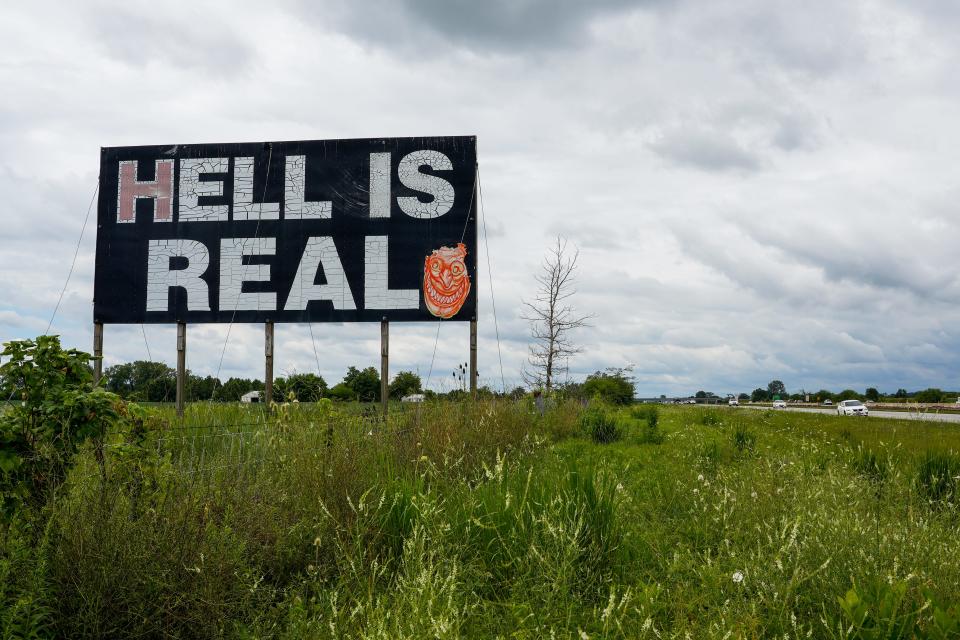
He remembers Columbus as flat, barren, and within in sight of seemingly millions of passing cars − the perfect place for a billboard. So Harston placed ads in local newspapers asking if anyone was interested in putting up a religious billboard free of charge to them.
Bob Hall, who owned the farm where the billboard still stands, responded. He was in the hospital undergoing triple bypass surgery. He called Harston crying and said, "I want to talk to you," Harston recalled.
Harston drove to the hospital. The deal was born, signed in the hospital waiting room.
Billboards like that can be pricey, but Harston basically created them himself at home. As a developer, he had framing crews and a warehouse where he stored vinyl cutters and heat presses. A friend designed the signs. He thought the red H stood out more. So red it was.
In some cases, a costly fight to keep the signs up
But, there's also been the cost of the lawsuits needs to keep them up. Not everyone loved the signs, including some state officials, Harston said.
North Carolina, Kentucky and Ohio have all sued to take the billboards down, arguing the billboards violated the Highway Beautification Act, which regulates how close billboards can be to highways by tying federal money to states that keep billboards a certain distance away.
Harston had lengthy county battles in Indiana, North Carolina and Ohio too to keep the billboards up, he said. He lost in North Carolina and had to take to billboards down. He won in Indiana. There, after being forced to take them down the state had to pay to put them back up.
He said he also won a case in Ohio, though The Enquirer could not find any record of the case and a spokesman for the Ohio Department of Transportation said there are few people still around from 19 years ago and nobody is aware of the case. In every case Harston thought it was really the message state officials objected to, not violations of the beautification law.
Online trash talk leads to Hell is Real soccer rivalry
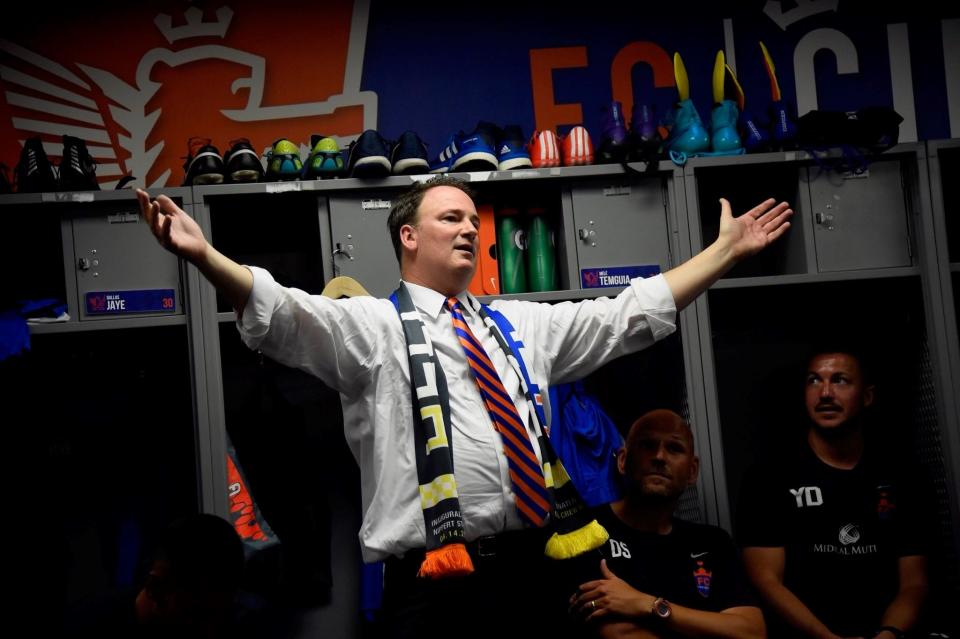
When FC Cincinnati and the Columbus Crew play, it's hard to miss the symbolism between these two rival Ohio Major League Soccer teams: Fire displays, specially-created spicy food and, in the case of FC Cincinnati a few weeks ago, an "orange out" at the game.
That's because the matchup is dubbed "Hell is Real" in homage to the billboard.
The rivalry name came out of 2016 Twitter talk.
Back then FC Cincinnati was a United Soccer League team; Columbus Crew was a Major League Team, but a possible matchup loomed.
A Columbus Crew fan and FC Cincinnati fan were bantering back and forth on Twitter and hatched the name at the same time. The 2016 game didn't come to be, but the two teams faced each other in the 2017 Lamar Hunt U.S. Open Cup, where games can be played among different leagues.
The game was officially dubbed the Ohio Derby. But fans embraced the Hell is Real moniker.
"It kind of came out of nowhere," said Matthew Long, FC Cincinnati's first season ticket holder, who was at the game. "It's such an obvious name. There's nothing else in between the two cities that would be an obvious choice."
FC Cincinnati supporters unfurled a hand-painted "Hell is Real" banner from the Bailey, the section of the stadium where supporters stand, chant and cheer.
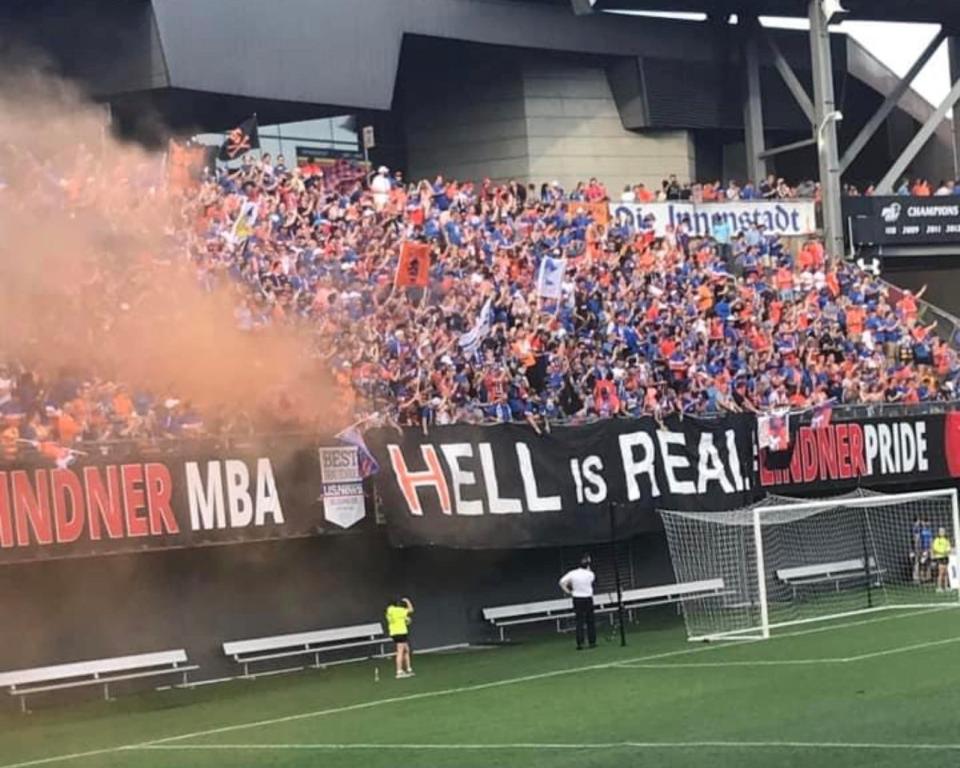
A fan gave out scarves with the words "Hell is Real" in orange and blue for FC Cincinnati on one side, black and gold on the other for Columbus Crew.
When FC Cincinnati won, team co-CEO Jeff Berding came down and stood in front of the Bailey. Someone threw him a scarf. Berding held it up in victory.
There have been lots of matchups between FC Cincinnati and Columbus Crew since then. The name not only caught on but has been embraced by the teams.
“Supporters drive match-day culture,” Berding said. “Our fans came up with it during the first match. It was organic in the truest sense."
There was never a formal naming of the game, but Berding said he had conversations with the Crew where it was acknowledged "the rivalry will forever be known as Hell is Real."
Game name and the billboard's meaning
Harston, in his first conversation with The Enquirer, said he and Hall at some point knew the soccer teams had embraced the billboard and didn't mind. To the two men, it remained a reminder to embrace Christianity.
Hall's heart recovered after that first meeting with Harston. He died two years ago at age 94.
The Hall family still owns the farm. Hall's wife, Nancy Hall, 90, laughed about how the rivalry game name caught on and she likes it. But, to her, and she knows for her husband too, it was always about the message and furthering the mission of being a good Christian.
"I hope the message really inspires somebody," Nancy Hall said.
Harston though, over the last few weeks, got to thinking about it.
In a follow-up conversation, Harston said he realized the teams were saying they themselves were hell when it comes to on-field play. He doesn't take the notion of hell lightly but understands the teams are using it as imagery.
"It’s not up to me," he said. "But I’d use different terminology."
Because, he said, it's not a game. For Christians like himself, Hell is very, very real.
If you go:
What: Hell is Real Derby between FC Cincinnati and the Columbus Crew
When: Sunday, Aug. 20
Time: 7:30 p.m.
Where: Lower.com Field, Columbus
Patrick Brennan contributed
This article originally appeared on Cincinnati Enquirer: What's the story behind Ohio's Hell is Real billboard on I-71?

